|
FRANCE
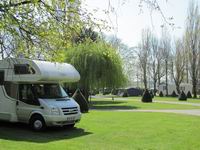
La Bien Assise, Guines, near Calais, France. This is our first campsite in France, 20th April, 2010..
|
We realised when we got to France that we needed a special camping card that entitled us to around 50% discount at over 1,891 camp sites in Europe. We ordered it on 20th April from Holland rather than the UK, as all airports in the UK and most of Europe were closed due to the volcanic ash from Iceland. It is now 8th May and still it hasn't arrived. Last Tuesday we ordered another one from the UK and it arrived 2 days later on the 6th May. Doesn't make sense. While we were waiting, some campers told us about the wonderful tulips near Amsterdam so we decided to go and see.
|
|
BELGUIM
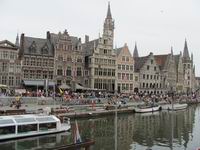
On the way to Amsterdam we spent the night in Ghent, Belgium. It is a very old and beautiful town. We had a very nice dinner in the 3rd building from the left. Trevor also enjoyed the Belgium beers and so did Marion.
|
.JPG)
Another lovely building in Ghent. See the steepness of the roof here. They are serious about shedding the snow off them.
|
|
HOLLAND - THE NETHERLANDS
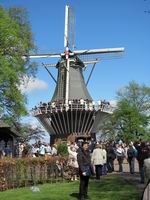
As you can see, we have arrived in Holland.The following photos are at the Keukenhof Gardens and buld fields, about 25 kms south-west of Amsterdam.
|
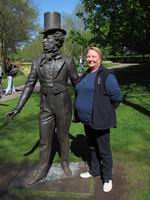
Marion and a smart bronze suitor she picked up in the gardens.
|
|
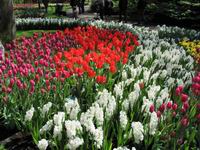
Keukenhof Gardens - there are acres and acres of beautiifully landscaped gardens of tulips, daffodils and hycienths. The smell was wonderful.
|
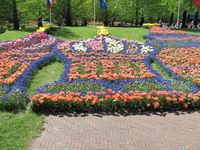
It was the Queen of the Netherlands Birthday Public Hioliday weekend and this floral crown is to celebrate this. This photo is actually only a part of the crown.
|
|

All around Keukenhof there are fields and fields of tulips. These are grown for their bulbs to sell to the public next year.
|
Since Keukenhof and Ghent, we have been moving through France and Spain via Neufchatel-en-Bray, Chartres, Poitiers, Bordeaux, Biarritz and Bayonne, Carcassonne, Sette, Toulon, Sette area again, Argeles-sur-Mer, Comaruga, Benicasim, Javea and El Aranel, Vinaroz (Spain), Agde, Millau, Severac-le-Chateau, Clerment-Ferrand, Bourges and Cheverny, with much more of the Loire to come.
|
|
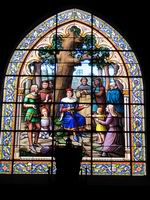
Poitiers - magnificent stained glass window in the Cathedral; one of many, in many churches and cathedrals.
|
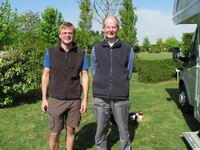
Mike from Sydney camped next to us and is hiking the St. Jacques walk of several hundred kms from Tours to Santiago de Compostela. We invited him to dinner in Geisty and had a thoroughly interesting evening. He had the best of lightweight equipment
|
|
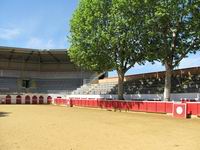
A French bullring in Nogaro north of the Pyrenees
|
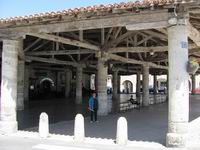
This covered market, in Mauvezin (Gers), was built to last; we are so glad our travels took us through this very attractive town.
|
|
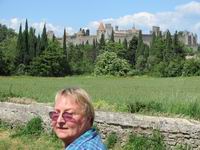
Approaching Carcassonne with dinner in mind
|

Returning from Carcassonne full of cassolet and a warm evening sun on the City
|
|
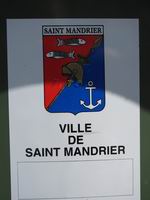
Our stay with Jacques Badin's sister, Denise, begins
|

The magnificent view from their dining room
|
|

Katoomba's premiere artist displays his work internationally, including Toulon.
|
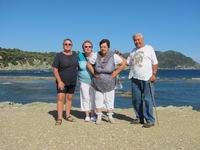
Marion, Denise, Marie-Helen and Andre; they showed us the whole area; see some more in 'Dining'
|
|
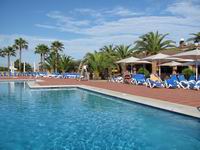
Out of season, most campsites are comfortably quiet
|
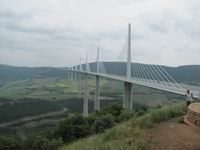
The Millau viaduct (it's big) on the A75 as we made our way to the Loire/Cher chateaux area from Agde
|
|
Severac le Chateau at sunset.
This is a lovely hiltop medieval town in the Central Massif
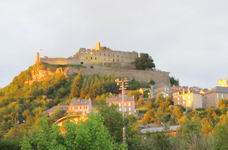
|

It had a small but very interesting free museum on medieval medicine and surgery; also on the fibres available then to weave cloth - wool, linen, cotton - and weaving techniques. It deserved and got a good donation from us
|
|
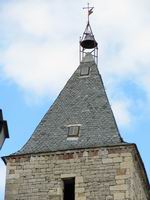
Its church bell was outside and on top of the steeple. As we moved on,we noticed many different designs of steeple
|
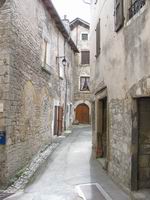
Severac le Chateau would be ideal for filming medieval stories
|
|
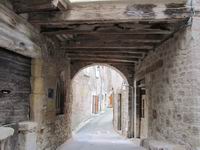
More of Severac le Chateau
|

Bourges has some lovely old wood-framed houses and was a very attractive and interesting city
|
|
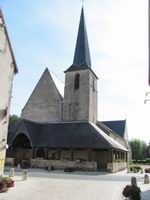
The church steeple at Cheverny, next to which we had an enjoyable lunch of gallettes and crepes with local cider
|
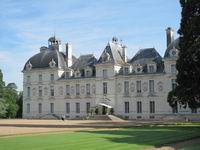
Cheverny Chateau is so beautiful, both outside and in. The designs of the rooms and their furnishings are almost beyond belief
|
|
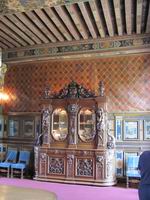
|
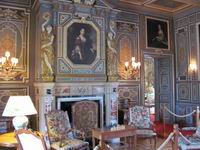
Cheverny rooms both left and above
|
|
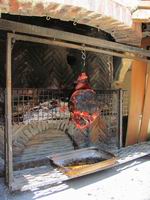
Cheverny campsite with an old outdoor charcoal oven and spit. We dinned on the Jambon that was smelling so good
|

Chambord is comparably beautiful
|
|
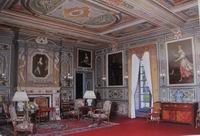
Chambord's interior above and right
|
 |
|
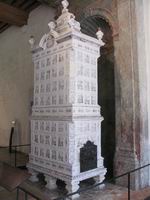
A very large ceramic wood-fired stove that would be fired-up and made very hot so heat was radiated for hours
|

Perhaps an exotic bed to entertain a mistress
|
|

Chambord towers
|
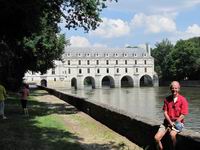
Chenonceaux is also beautiful in the extreme
|
|
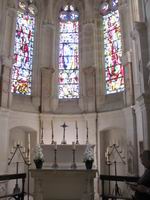
Chenonceaux chapel
|

Art is everywhere in the chateaux we visited
|
|

Another exotic bed
|
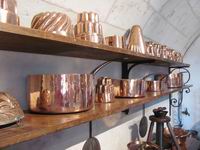
The kitchen at Chenonceaux was very well preserved, but difficult to photograph because so many people were there
|
|
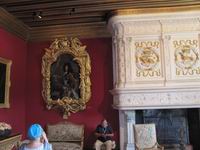
More of Chenonceaux
|
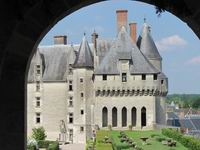
Langeais Chateau full of tapestries. We bought a modern one made in the old style
|
|
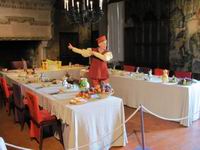
The dining room was set up in the style of the period, including the foods on show and with a very enthusiastic actor telling us all about it (this challenged our understanding of French)
|

Part of an old fortification, now with scaffolding of the time to show construction, including a pulley and capstan for hoisting stone blocks and materials
|
|

Joseph, we couldn't let this go unrecorded in Langeais, but didn't have the time to eat there.
|
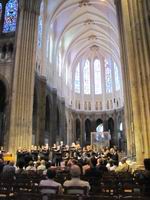
Our second visit to Chartres. This time it was warm and sunny, and as we walked in to the cathedral a choir from LA commenced singing so we just sat and enjoyed the angelic voices.
|
|
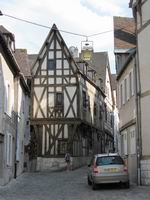
A house in Chatres old town
|

In France the church spires seem to follow a local style, being pierced stone in this part of Normany (near the Normandy beaches).
|
|
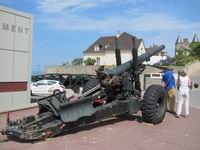
A World War II gun at Arromanche-les-Bains in Normandy, where there are the remains of the mulberry harbour. There is an excellent museum describing and demonstrating the whole construction, transport by sea and assembley of the harbour, massive in scale and technically difficult.
|
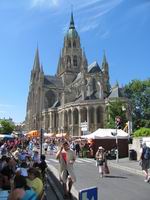
At Bayeux cathedral on a fete weekend. The 11th Century Bayeux tapestry is on display here and is 70M long. the whole story of William the Conqueror's invasion of England and battle against Harold at the Battle of Hastings is told.
|
|

A stonemason displaying and working at his craft outside the Bayeux cathedral.
|
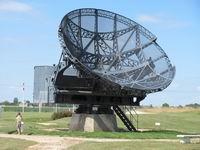
German World War II radar dish in Normandy at a site that used 3 different types of radar.
|
|
Having toured the UK and overcome some health issues, it was time to return to Spain, mid November 2010, with Sharon accompanying us for a month. The three of us sailed on the ferry from Portsmouth to Santander in N Spain, with Geisty and Peugy (the Peugeot 107) we now tow behind the motorhome.
The photo to the right is Sharon in holiday mood on the boat approaching Santander in northern Spain and below is Marion and Trevor taken at the same time.
|

|
|
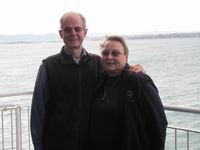
|

Close to Madrid, there was snow on the mountains, with -6deg C at night.
|
|

A sunset from the campsite near Madrid.
|
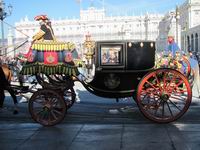
Outside the Royal Palice in Madrid on the day that King Juan Carlos received the various ambassadors from embassies and consulates in Madrid.
|
|
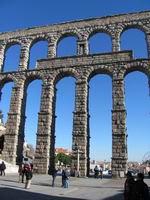
This Roman-built aquaduct is at Segovia and nearly 2,000 years old.
|
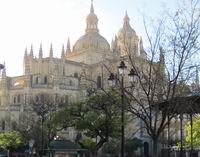
The gothic cathedral in Segovia
|
|
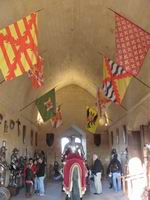
The armoury area within the Alcazar in Segovia.
|
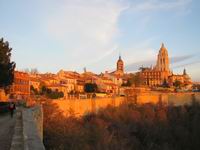
The warm glow of late evening on Segovia city. While is looks warm, the midday temperature was about 2deg. C and windy.We wrapped up warm with gloves and waited for the restaurants to open for lunch.
|
|
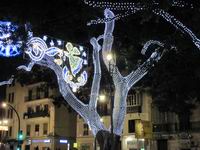
This is an evening in Malaga where extensive Christmas decorations had been put on the trees and strung across many streets. They looked beautiful.
|
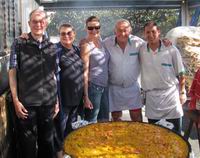
Having stayed in Nerja, east of Malaga, 30 years ago we found the same beach restaurant that we liked so much then. The owner, Ayo, is still there looking only a little older and he is 2nd from right. They still cook enourmours paellas, see the circular paella pan above. All 3 of us enjoyed excellent paella, white wine and coffee there and renewed aquaintances with Ayo.
|
|
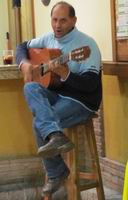
The restaurant at the Granada campsite served excellent meals with friendly waiters who helped us with our Spanish. We enjoyed flamenco guitar playing in the restaurant.
|
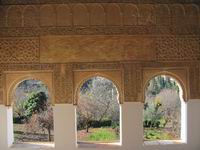
Granada is famous for the Alhambra and you can just see the exquisite carved plaster-work above the arches.
|
|
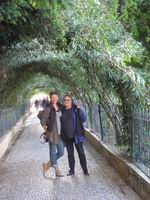
Sharon and Marion in the Alhambra Generalife Gardens.
|
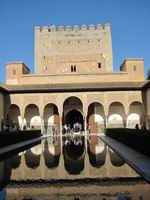
This is a courtyard within the Alhambra where the Moors used water gardens to both beautify and cool the building.
|
|
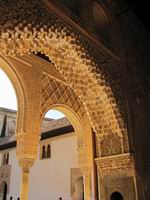
More Alhambra plasterwork
|
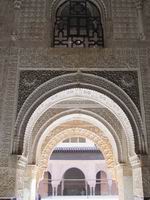
Yet more of the beautiful Alhambra through several arches.
|
|
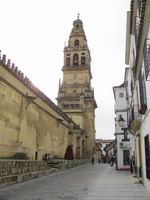
We then moved on to Cordoba and this shows Torre del Alminar, the bell-tower of the Mezquita, built by the Moors in the 12th century, and added to by the Spanish catholic church over the centuries.
|
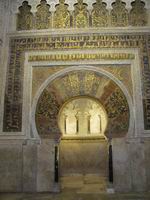
The Mihrab, which is the richly ornamented prayer niche of the Mezquita.
|
|
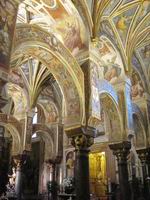
There are many arches in the Mezquita with beautiful painted plasterwork decoration.
|
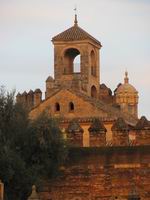
Another view of Cordoba.
|
|
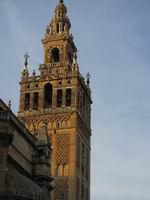
Then on to Seville and this is a shot of La Giralda, the bell tower of Seville Cathedral
|
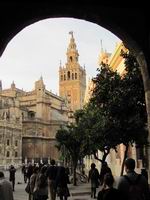
Another shot of the cathedral. Just round corner, we had an excellent tapas dinner, where the dishes come one after the other and so the eating experience is hard to catch on camera.
|
|
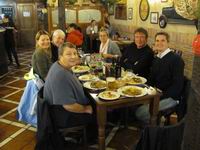
Dinner with other delayed travellers
|
The snows over northern Europe in mid December delayed our Malaga/Luton flight as Lutin Airport was closed. The 24hr delay was made enjoyable by meeting the other 4 travellers with T, M and Sharon seen round the dinner-table to the left.
Having returned to England for Christmas, we then returned to Malaga, Spain with Margaret, by air in mid January.
|
|
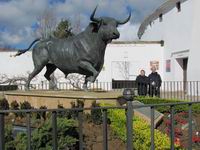
Outside Ronda's bullring. Ronda is a picturesque town, a short drive from Malaga and is the spiritual home of bull-fighting. Pedro Romera, pictured right, is regarded as the father of the modern bullfighting style, and was born in 1754.
|
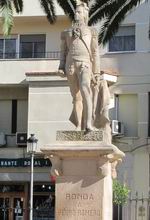
Pedro Romero
|
|
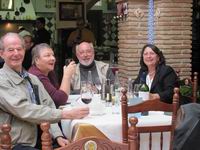
Trevor, Marion, Valeria and David at David's 60th birthday lunch, Margaret taking the photo.
|
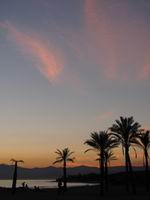
Sunset over Cabopino beach near where we stayed for 4 weeks in November/December and 4 weeks in January/February.
|
|

Geisty towing the little car is dwarfed by a very long 96-wheel low loader carrying a cast-concrete bridge span. The low-lowder needed 2 damaged tyres replaced and a very strong jack to raise an axle. The low-loader was pulled by a 20-wheel jockey and the whole stretches from left to right in the photo.
|

An angry sunset during our return from Southern Spain to Northern Spain on our way back to the U.K. and Australia (for Trevor's 70th).
|
|
|
|
| |
|